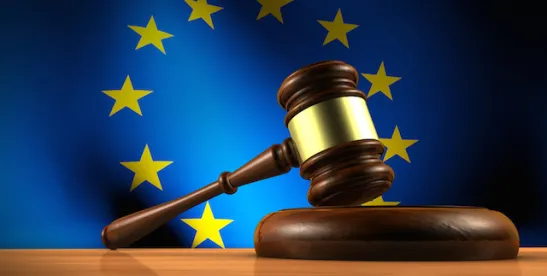This is Part 5 of an 8-part series examining post-grant review proceedings, oppositions, and third party observations in the U.S., BRIC and several non-BRIC countries. To see Part 1, Post-Grant Oppositions in Japan, click here. To see Part 2, Third Party Submissions in Russia, click here. To see Part 3, Pre- and Post-Grant Oppositions in India, click here; To see Part 4, Third Party Submissions in the U.S., click here.
Third Party Observations
Article 115 of the European Patent Code (EPC) allows any third party, following the publication of an European patent application, to present observations concerning the patentability of the invention to which the application relates. Specifically, observations can be directed to novelty, inventive step, clarity (which cannot be asserted as a ground during an opposition), sufficiency, industrial applicability, added subject matter and subject matter excluded from patentability. Third party observations (TPO) can be submitted after a pending European patent application publishes, including after an Applicant receives a Rule 71(3) communication (indicating the European Patent Office’s (EPO) intent to grant a patent) up until the date the decision to grant is handed over to the EPO’s internal post service for dispatch (observations submitted after this date will simply be added to the non-public part of the file), as well as during an appeal proceeding.
Observations must be filed in writing in English, French or German and must include a statement of the grounds on which they are based. Documentary evidence, such as patents, published applications and non-patent literature or evidence of prior use (such as affidavits, drawings, brochures) submitted in support of the arguments, may be filed in any language (the EPO may require a translation into one of its official languages within a specified time period). Observations may be filed by paper (such as by mail or fax), electronically or by using the “submit observations” tool from the EPO register which can be found here. There is no fee for filing a TPO.
Although the EPO will acknowledge receipt of a TPO, it will not specifically inform the third party of any further action it takes in connection with the TPO. After filing, the EPO will forward the TPO the Applicant who has the option of commenting if it so chooses. Examiners are required to take a TPO into account during examination and are obligated to provide an opinion on any TPOs filed in the next examination report.
While a TPO can be filed anonymously (such as through a “straw man”), certain advantages are available for third parties who reveal their identity. Specifically, any TPO submitted by a third party that identifies itself will be given priority by the EPO during examination (as part of its “Early Certainty from Search” initiative) and may be admitted during an opposition.
Comparison of TPOs with Third Party Submissions in the U.S.
The below provides a comparison between TPOs in the EPO and third party submissions in the U.S. Patent and Trademark Office (USPTO).
Please note that our final post in this series will compare Inter Partes and Post-Grant review in the USPTO with oppositions in the EPO.




 />i
/>i




